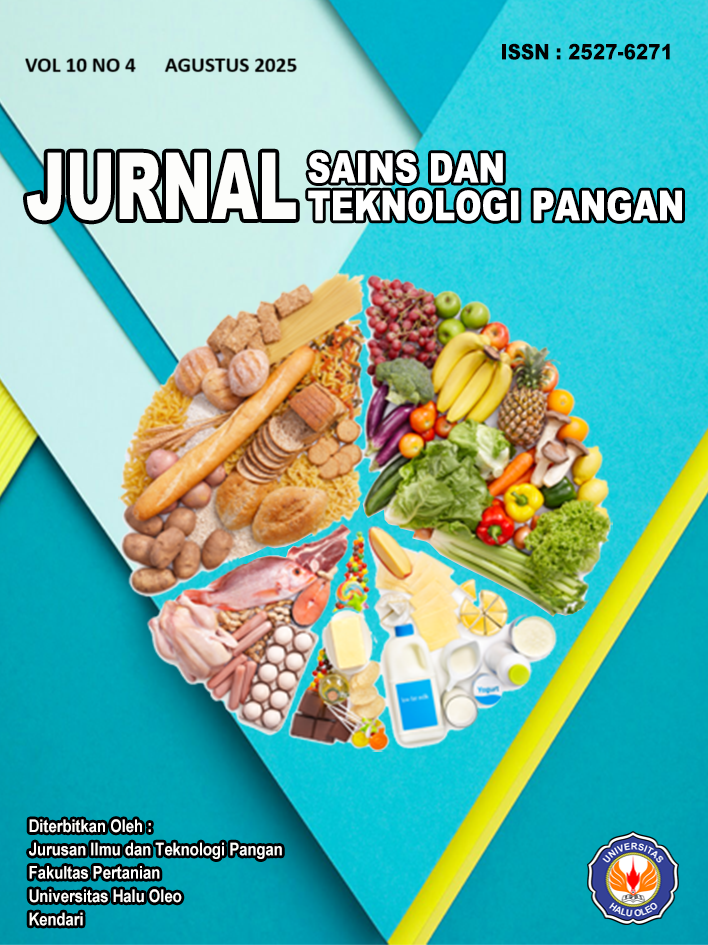KARAKTERISTIK FISIK, KIMIA, DAN ORGANOLEPTIK UDON TERSUBSTITUSI TEPUNG UMBI KIMPUL PADA VARIASI PERLAKUAN: KONSENTRASI TEPUNG DAN WAKTU RESTING
DOI:
https://doi.org/10.63071/mbwssc90Keywords:
Udon, Wheat, Kimpul Flour, Resting TimeAbstract
Udon is a type of Japanese noodle made from protein wheat with a larger size and chewier texture characteristic compared to noodles in general. Optimizing local agricultural commodities by utilizing kimpul flour as a substitute is an effort to reduce wheat import activities. Udon has characteristics that need to be considered, namely chewiness. Resting time is needed so that water is absorbed into the dough and binds the dough maximally so that the udon is more elastic. The study was conducted to determine the characteristics of udon produced from variations in flour concentration and resting time treatment. This study used a completely randomized design (CRD) with two factors, the first factor was the concentration of kimpul and wheat flour 0%:100% (K1), 15%:85% (K2), and 30%:70% (K3). The second factor is the variation of resting time of 0 minutes (T1), 60 minutes (T2), and 120 minutes (T3). The results showed that udon had the following physical and chemical properties: elongation with values ranging from 18.29%-31.11%; tensile strength ranging from 0.47N/m2-2.77N/m2; cooking loss ranging from 0.63%-1.21%; rehydration ranging from 52.33%-69.33%; solubility ranging from 0.77%-1.04%; swelling power ranging from 3.146g/g-3.717g/g; brightness level 46.3-70.3; moisture content ranged from 30.56%-36.90%; ash content ranged from 0.16%-1.61%; protein content ranged from 9.12%-13.86%; starch content ranged from 48.08%-52.49%; amylose content ranged from 11.53%-13.46%; amylopectin content ranged from 34.64%-40.92%. Udon has the highest colour preference value of 6.17 (like), taste preference value of 5.47 (like) texture preference value of 5.5 (like).










